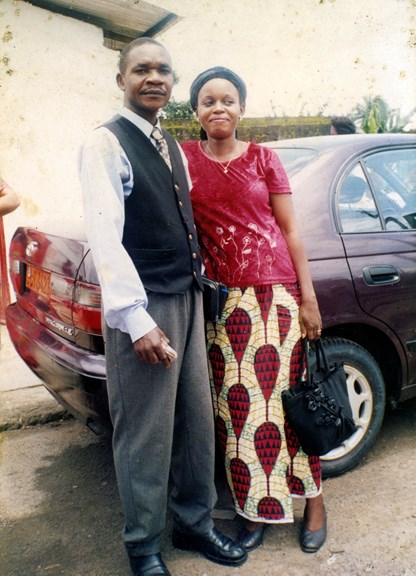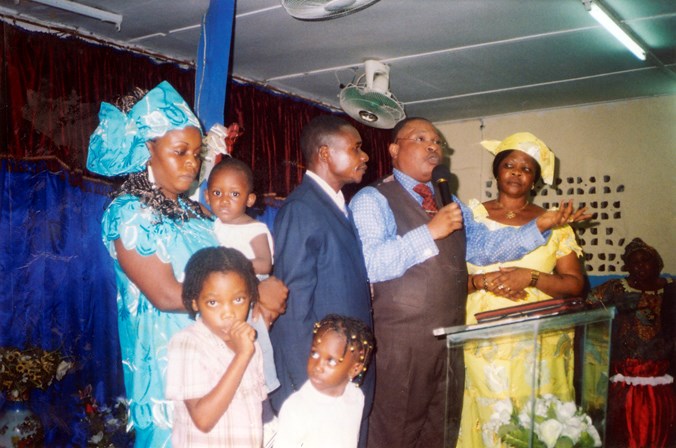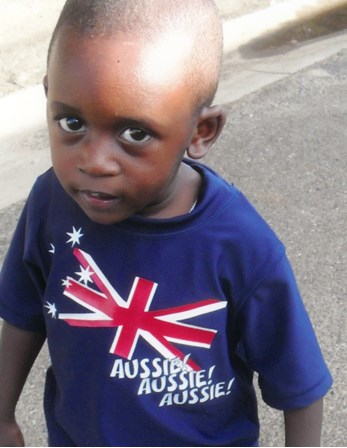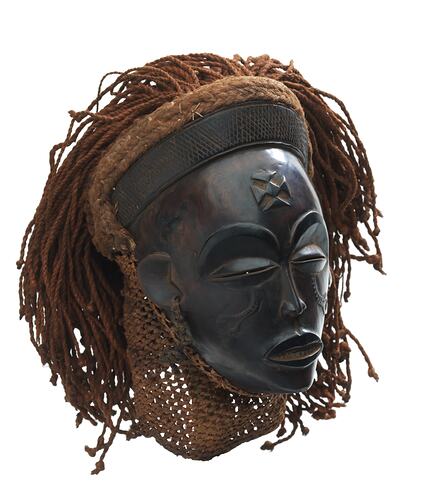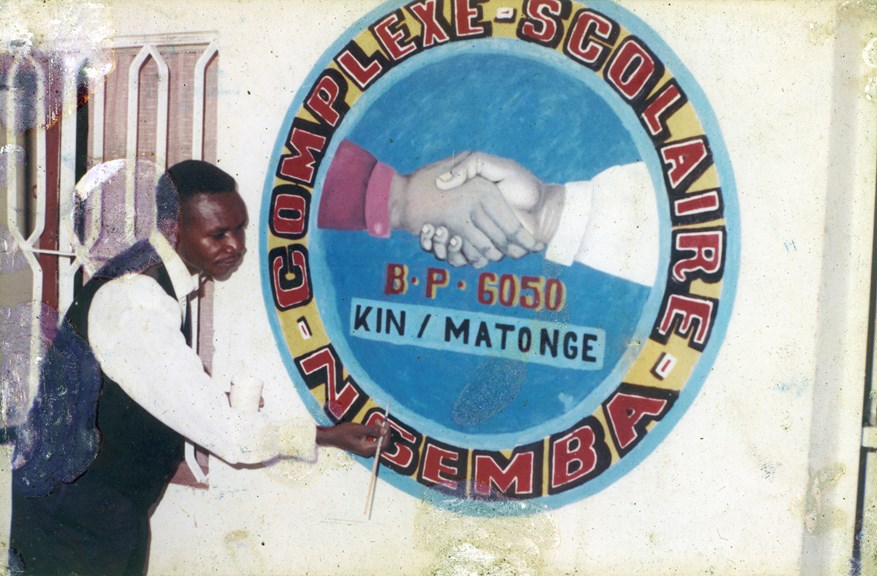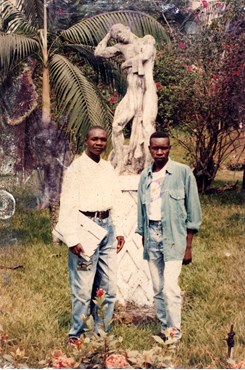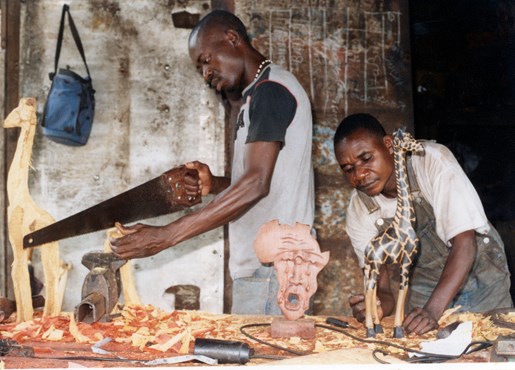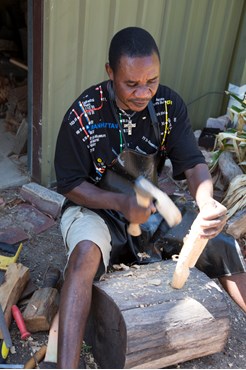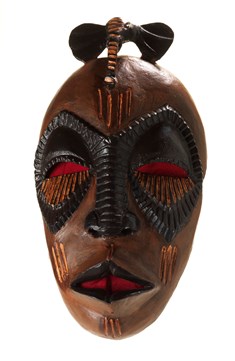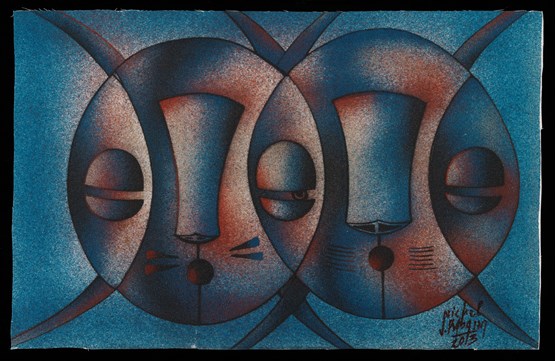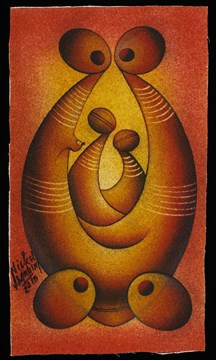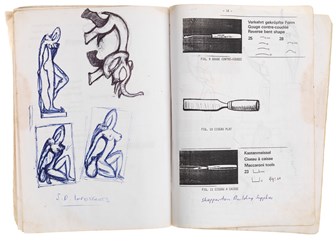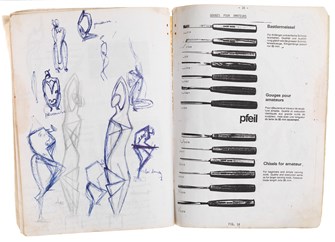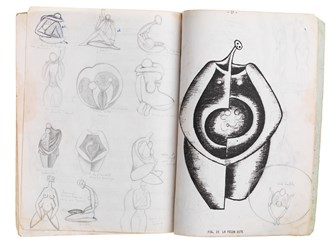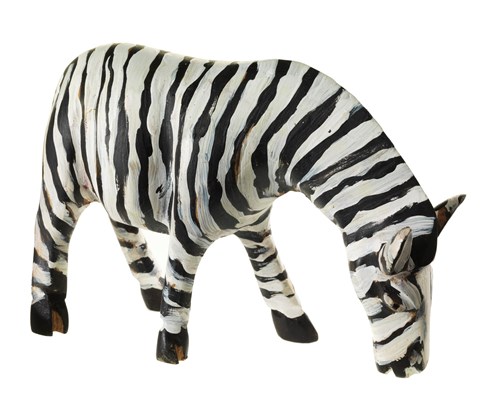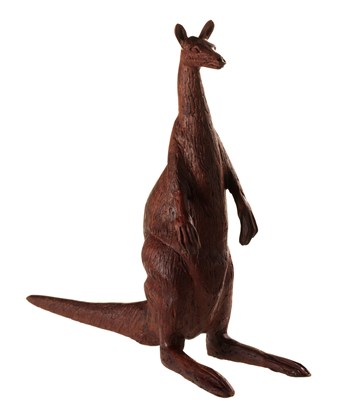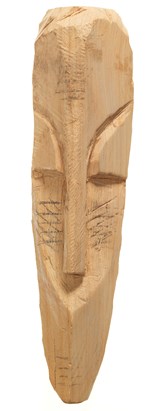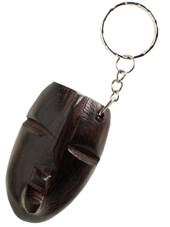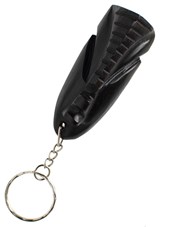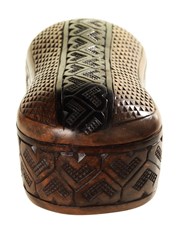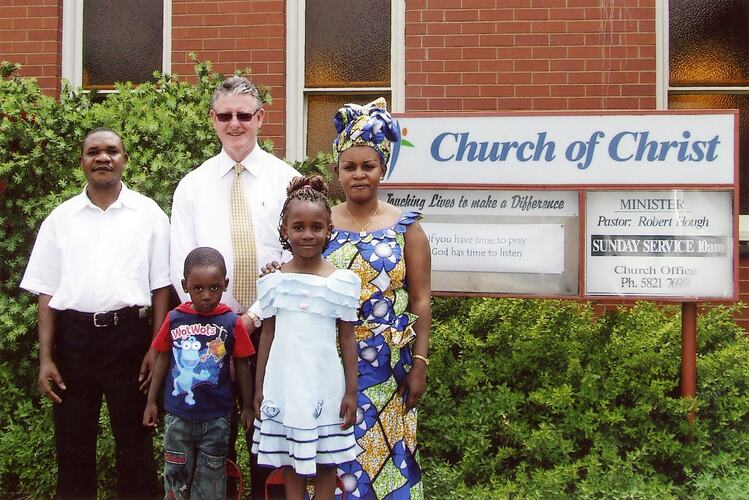Nickel Mundabi Ngadwa
"One day, I was at school, I was teaching, there was a friend of my father who came to tell me that 'You have to leave... If you don't leave now... you will be killed like your father.'"
Nickel cannot return to the country of his birth. In 2000, his father was arrested and taken away when the political regime in the Democratic Republic of Congo (DRC) changed. He still does not know what happened to his father.
Nickel and his nephew Guillian left Kinshasa, the Congolese capital, for Kisangani where his pregnant wife Gertrude was staying with his family. Ten days after she gave birth to their first son, rebels came to the family home and brutalised everyone.
Gertrude fled with Nickel's sister on foot to Cameroon. The rebels captured Nickel and Guillian but they escaped. After almost five months, they reached Douala, Cameroon.
After three years separation, the United Nations High Commissioner for Refugees (UNHCR) informed Nickel that his wife was alive and searching for him. They reunited in 2004 at the border of Cameroon and the DRC, Gertrude uncertain that it would really be him. They had two more children, but their two eldest (one from Nickel's previous marriage) were missing.
In 2009, the family's refugee applications were approved and they were settled in Shepparton in regional Victoria. Nickel paints and carves and continues to attend English classes. He hopes to make a living as a professional artist.
Their sons Gaspy and Exaucé were found in 2011 and are trying to join the family in Shepparton. Guillian remains missing. Life is not easy. English is a hard language to learn and unemployment is high in Shepparton, especially amongst recent refugees. The family became Australian citizens in 2014.
Carving Out a New Life
"I wanted to be an artist like he was, since he had sworn to my father that as soon as he would have a boy, so he would do art...he lives in me...I'm proud to keep on going with his work."
Zachese Mundabi Ngadwa had always hoped his grandson Nickel would become an artist. Nickel remembers being in his grandfather's workshop when he was five years old and learning to carve small items such as key rings.
According to Nickel, Zachese was the first artist in the Democratic Republic of Congo (DRC) to professionalise traditional art-making practices.
Nickel had a prolific teaching and artistic career in Kinshasa, including an apprenticeship at the African Arts Workshop under the Master sculptor and painter Oskar Mpane Ankombo. All that ended abruptly when he was forced to flee to Cameroon because of the change of regime in the DRC and the arrest of his father in 2000.
While living in Douala, Nickel made an independent living from his art work. In 2006, the government of Cameroon helped him establish a painting and sculpting workshop to train underprivileged young people.
Nickel arrived in Australia as a refugee in 2009 but trying to be an artist in a new country has many challenges.
Watch: Carving Out a New Life
Nickel Mundabi Ngadwa demonstrating his carving and painting processes, Shepparton, 2014.
"Someone just arrived, who's got nothing, who doesn't speak English...where will he go? Where to buy the wood? Where to buy the equipment?"
He has since exhibited his sculpture and paintings in a number of exhibitions. His sculpture reflects both his traditional culture and the artistic influences of his grandfather, as well as more contemporary and abstract forms. He also produces items for sale to help support his family.
A new path
"Art...the tradition is in my blood and to move on to other stages means not to throw away tradition but to improve it."
From his art student days until today, Nickel's art practice continues to adapt and evolve. The elephant mask was the first piece he created in Australia:
"It shows power, it shows spirit, it shows grandeur," says Nickel.
New influences
"Australians wanted to see an African artist carving Australian animals out of Australian wood. They were interested in my art pieces and quick to buy them."
Nickel adapted to new timbers to create symbols of both his old and new homelands. He must also be resourceful in finding materials:
"I have created the little zebras out of discarded wood."
Finding a way
"I cannot manage to find the means to buy the wood (I need) to express what is found (deep) inside my heart."
Nickel brought many carvings to Australia which demonstrate his Congolese artistic traditions.
But maintaining his craft and livelihood with limited resources is difficult, while also establishing his reputation as a professional artist.
The growing community
About 160 Congolese people of diverse ethnic and linguistic backgrounds have settled in Shepparton. Languages spoken include French, Swahili and the Mundabi family's own language, Lingala.
The spirit within
"Masks, it’s something very powerful. The strength, grandeur...The masks first symbolise spirituality...of a people. And when one talks about spirituality of a people, one can also see God."
Masks were used by family members for ceremonial events such as weddings and circumcisions. Worn on the hand rather than the face, the small seeds hold symbolic meaning—joy (yellow), grandeur (red), holiness (white) and peace (black).
See the exhibition
Immigrant Stories is now showing at the Immigration Museum.
